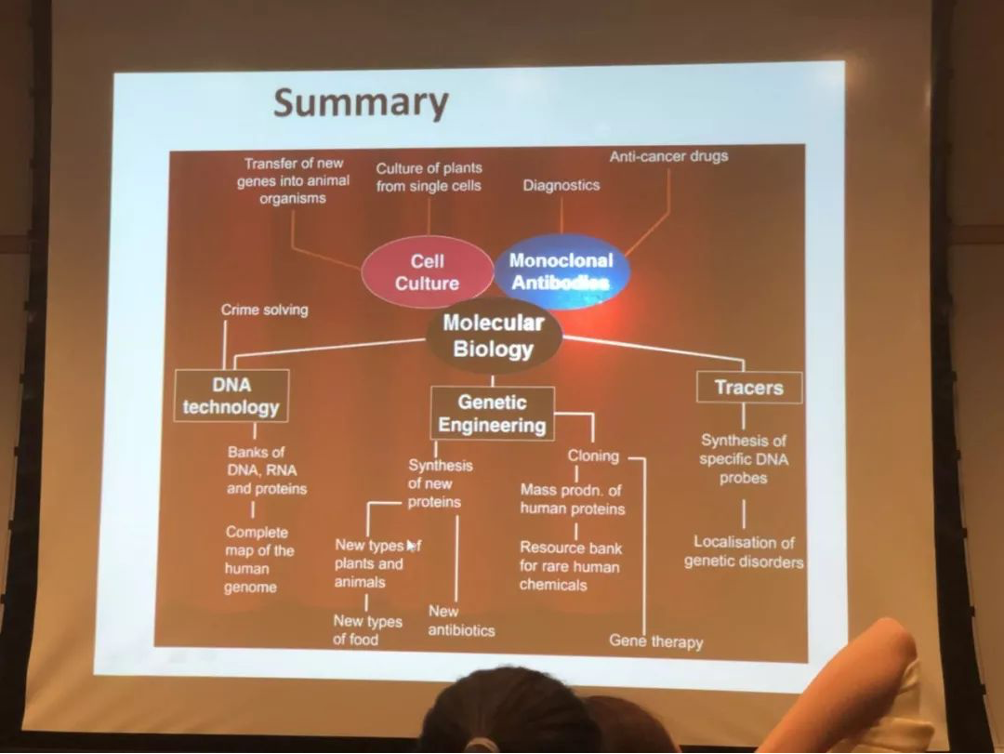This is my first week studying with Mrs. Yang. We are studying computational modeling of RBC. First, I have to face and admit the fact that this is a college-level study and I’m not knowledgeable enough to deal with lots of problems. Anyhow, I’m good at the field of science, compared with my peers, and I’m willing to challenge my ability of studying the knowledge beyond my horizon. Another member in our team is a college student who is able to figure out those problems that I can’t solve. Unfortunately, I don’t have any computer programming background at present, so I don’t do the computer. What I do is to study RBC in a biological way, and I have discovered many things I’ve never heard of before. Hope my presentation can inspire us.
Timing has changed. I learned a truth that biologists don’t study biology only. The advanced study of biology requires other fields like physics and programming. During our meeting, I learned some college-level conceptions and formulas, like discretization and other methods. The following contents will be about information I have searched and my understanding about red blood cell. RBC, or erythrocyte, is responsible for transferring oxygen and carbon dioxide through our bodies. It’s like a sack of hemoglobin, with a plasma membrane as the sack.
RBCs lose their cell nucleus, mitochondria and most organelles as mature. Thus, they don’t carry DNA, make proteins or make energy. Losing those organelles is for accommodating maximum space for hemoglobin. It seems that RBCs don’t do any jobs other than carrying oxygen and carbon dioxide. Our study mainly focuses on RBC’s physical properties. RBC is small but abundant. Its radius is 3-4micrometers approximately, and its shape is called biconcave disk. Organisms are always rationally designed. The features just mentioned is for maximum surface area. For one thing, surface area-to-volume ratio decreases as volume increases because the value of volume increases at the speed of the power of 3. And the small particles have a larger total surface area than a big object. That’s why flour can explode. Here are some microscopic physical properties of RBC. RBC has suspension stability.
RBC is denser than the plasma, but it doesn’t sink in our blood vessel quickly. A common theory is that RBCs have negative charges on their plasma membrane and they rebel one another, so they don’t gather. The cell membrane of the cells on the surface of the blood vessel also contains negative charges, because it has the same outer layer, the glycocalyx. If their cell membrane becomes neutral, may be because proteins carrying positive charges increase, the cell gather and sink. As a result, the surface area decreases and the flow of blood is affected. Also, RBC absorbs water easily due to their highly concentrated cytoplasm(containing lots of hemoglobin). So when the blood becomes less concentrated, water will diffuse inside the cell because of potential difference and the cell will burst as there’s no cell wall to prevent that. Our focus is actually the elasticity of RBC, which is very critical.
Because the RBC need to pass through some narrow channels like capillaries, it must change its shape. It must be able to become less than half of its original diameter and recover the discoid shape as soon as they stop receiving compressive forces, like rubbers. The cell’s deformability is positively proportional to its surface area-to-volume ratio, negatively proportional to the viscosity of the cytoplasm, and positively proportional to the elasticity of the cell membrane. Because of having only cytoplasm and plasma membrane, the deformability depends greatly on the cell membrane. So, the cell membrane is focus. RBC’s cell membrane is composed of proteins and lipids, and this structure provides cell functions such as deformability.
RBC’s cell membrane has 3 layers. The external one is glycocalyx, which is composed of a negatively charged network of proteoglycans, glycoproteins, and glycolipids and play a role in the communication with the outside environment. The medium layer is phospholipid bilayer, just like typical cell membrane. The lipids influence the activity of protein and define the cell’s permeability and fluidity. The inner layer is the membrane skeleton, network of proteins. It defines the cell’s deformability, flexibility and durability. The cell’s elasticity is defined by the cell membrane, and to be more specific, the protein network within the plasma membrane. There are currently more than 50 known membrane proteins
They perform a wide diversity of functions, such as transporting ions and molecules across the red cell membrane, adhesion and interaction with other cells, as signaling receptors, as well as other currently unknown functions. The blood types of humans are due to variations in surface glycoproteins of red blood cells. Our focus is called spectrin, which is elastic, and the membrane is mostly composed of spectrin and actin. Spectrin is a cytoskeletal protein that lines the intracellular side of the plasma membrane. It is a long, stretchable fibric protein, approximately 100nm long. It made of two antiparallel chains. Mutations in spectrin commonly cause hereditary defects of the erythrocyte including hereditary elliptocytosis and rarely hereditary spherocytosis.
According to my inferences, I believe that many blood diseases are hereditary because the cause of these diseases is defects of proteins. And DNA codes for the production of protein. Another disease related RBC is sickle-cell disease, a genetic disease that results in abnormal hemoglobin molecules. It is caused by the substitution of a single amino acid in the hemoglobin. The sickle cell hemoglobin molecules crystallize by aggregating into long rods. the crystals deform the red cells into a sickle shape. This harms the circulation of blood. Malaria is also a kind of blood-related disease. Within the red blood cells, the parasites multiply, asexually, periodically breaking out of their host cells to invade fresh red blood cells. Several such amplification cycles occur. This one isn’t hereditary.
First week, I got used to doing research and tried my best to acquire knowledge. Hope in the next weeks, I can start to understand the programming.
This is the second week studying with Mrs. Yang, and I started to work on a new topic, brain and CSF(cerebrospinal fluid). I’m not very familiar with brain, so I learned the basics on my own and studied the paper.
On Wednesday, Mrs. Yang taught me how to read a paper. I don’t have experience of reading papers, so sometimes so many words become overwhelming for me. As I remember, it’s okay to skip the abstract if you are not familiar with the topic, because you will probably not understand it. It is the conclusion of the whole paper. So, I started reading the introduction first. The review is quite long that the introduction contains 1931 words. Some sections of the paper are impossible to fully understand due to my lack of essential basic knowledge. Notwithstanding this, I finished the whole paper, the first time officially studying a paper.
I spent much time studying our nervous system first, since the brain is the central control of the nervous system. In another word, it gives orders to the neurons. Neurons has dendrite and axons, for receiving and sending signals respectively. It is noteworthy that some neurons use axon to both receive and send signals, like sensitive neurons. And the signals they send is not exactly electric current, but action potential. This process involves the flow of K+ and Na+ and change in the voltage across plasma membrane. Synapse is the space between two neurons where the signals are passed from one to another. Our nervous system is composed of PNS and CNS. What PNS acts is actually a relay between CNS and the limbs and organs. The CNS is composed of the spinal cord and the brain. The spinal cord acts as a relay for brain and controls reflexes. The central nervous system is protected very well, and this shows their importance. The brain is protected both physically and chemically. (by skull, CSF…) All these things were studied thoroughly and I thought I could begin reading the paper.
On August the first, Today, a scientist working in Koch building led us to his lab. Koch building is of many biology labs. We entered his lab which is at 2nd floor. During our visit, he showed us some equipment, their usage and some samples. He also introduced some advanced biotechnology like biochips and photomasking. He got a multifunctional microscope, and introduced cells using it. He said many things that I never heard about. He conducts experiments, unlike Mrs. Yang who uses computer to build up models. They cultivate cells on the substrate and observe their development.
When the cell in the solution reached the substrate, they stick to it and become bullet-shape. This is corresponding to what is going on in human body. The scientists measure the forces involved in it, which is pretty complicated. Experiments and computer modeling depend on each other. The lab has strict roles about sterilization. They use alcohol to do it. It was a good experience, and I knew that some scientists don’t know how to do the computer. When the equipment is accurate enough, experiment should be preferred since it directly reflect the reality, and computer can hardly build up a real world (some perimeters are often ignored, and the people haven’t discovered the whole physical world. Also, I have to admit that it’s better to use modeling and experiment. So, I will study programming, for sure.
The topic of the review is A balanced view of the cerebrospinal fluid composition and functions: Focus on adult humans. This is a brief summary of my learning. The study composes the composition and functions of CSF, some popular analogies, some technical issues and some mechanisms in the CSF circulation. CSF is secreted by choroid plexus (CP). CP is a plexus of cells in the ventricles of the brain. CP has considerable capillaries and cilia cells.
Plasma passes through these cells and form CSF. It can be understood as blood-CSF barrier. Also, many active transportations are involved in the CSF production. CSF is principally made up of Na+, Cl− and HCO3 −, with lesser amounts of K+, Mg++, Ca++; certain vitamins (e.g., folate, AA, thiamine and pyridoxal monophosphates); and peptides and proteins actively transferred into CSF from blood (e.g., leptin) or synthesized in CP. The CSF contains little protein. CSF transfer oxygen, carbon dioxide and small molecules for the brain. The capillaries are responsible for transferring big molecules. Of course, the substance exchange is quite strict in brain. BBB (blood-brain barrier) is the protective mechanism.
The junctions between vessel cells are very tight, so some chemicals can’t pass through. The CSF provides both physical and chemical protection for the brain. It provides buoyancy, so the brain is not directly placed on a solid skull (reducing the forces acting on the brain). Also, it reduces the influence of collision on your head. Its composition is well controlled, so some drugs won’t affect the brain’s functions. The CSF provides nutrients for the cells in brain. Scientists hypothesize that the peptides and proteins in the CSF are for neuron replication. Also, the CSF signals the cells, like telling the CP how much CSF to produce.
If this goes wrong, the CP may produce too much CSF and cause hydrocephalus. Doctors may cut the CP directly or let the CSF flow into other ventricles. This sounds a little creepy, and this is a big problem, because I think the pressure in the brain will increase and cause damages. The immune system in brain is microglia, since no WBC can pass through the BBB. Here are some widely used analogical descriptions of the CSF including: the CSF as the“third circulation,”the CSF as a“nourishing liquor,”the similarities of the CSF/choroid plexus to the glomerular filtrate/kidney. First, CSF does circulate.
In the ventricles, blood enters CP and is filtrated to form CSF. The CSF formed in the lateral ventricle will pass through interventricular foramina to enter the third ventricle. The CSF in the third ventricle will pass through cerebral aqueduct to enter the fourth ventricle. The CSF in the fourth ventricle will pass through lateral and median apertures to enter subarachnoid space and then arachnoid villi of Dural venous sinuses. Then it becomes venous blood which will go to the heart and lung to become arterial blood again. Second, CSF is a nourishing liquor because it carries nutrients, which is mentioned before. The CP is like a kidney in our brain, because both of them filtrate blood. One secrets urine, another secrets CSF. The BCSFB filtrates the blood. Also, both system reabsorb substance. E.g. the vitamins C is reabsorbed by VCST2 in the CP. This is all for the introduction of my study.
My opinion is that CSF is a special circulation and protection for the most important organ, brain. Brain is still mysterious, and I believe many questions related to brain is philosophical. Why do we live? Exist just for existing? Figuring it out will be a great improvement of human civilization. Also, development of brain will benefit our world. We will think more properly and rationally. CSF serves for brain, and by learning it, we shall know what kinds of services the brain need and how CSF does it.




